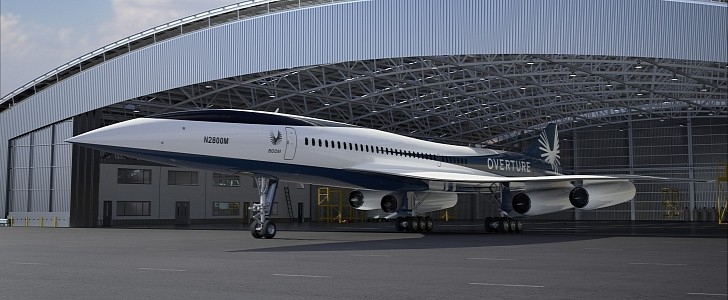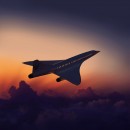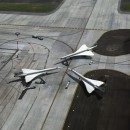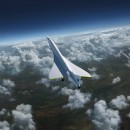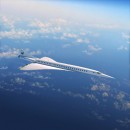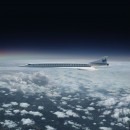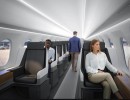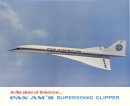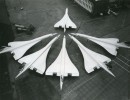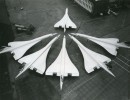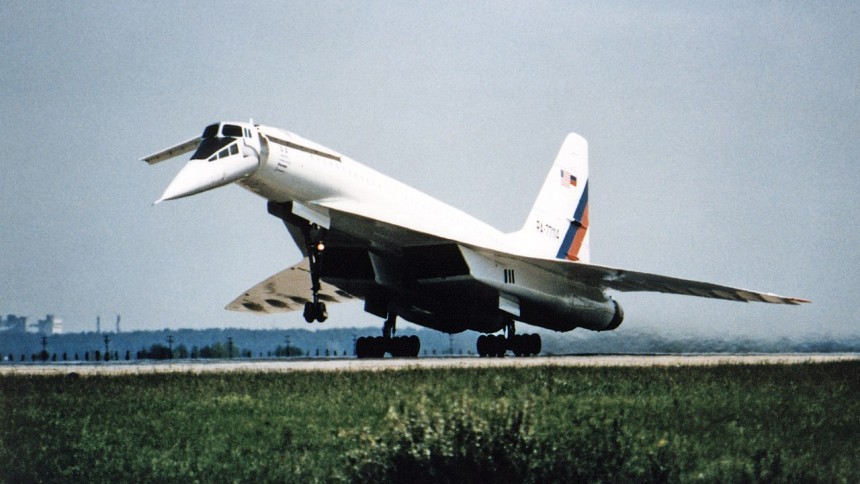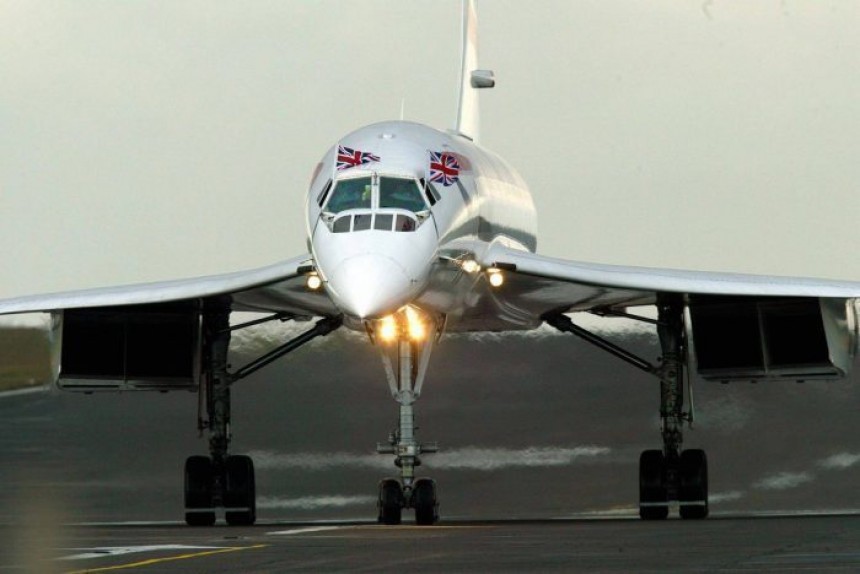If you know anything about supersonic passenger airliners, you'll know only one of them managed to be any good at their job. That being the Anglo-French Concorde, an airplane that hasn't flown in almost two decades. As of late 2022, the only company with even a little hope of spiritually replacing Concorde is in a real spot of bother.
The Denver, Colorado, based Boom Technology and their Overture Supersonic Transport (SST) concept vehicle seemed on a fast track to honor Concorde's legacy when they paired with Rolls Royce in 2020. The same company that was part of the team helped build the Olympus 593 turbojets found on Concorde. But after two and a half years of investigating the viability of providing engines for the Boom Overture, Rolls-Royce decided that proceeding forward was not in their best interest.
"After careful consideration, Rolls-Royce has determined that the commercial aviation supersonic market is not currently a priority for us and, therefore, will not pursue further work on the program at this time." Declared an official press statement from Rolls-Royce. "It has been a pleasure to work with the Boom team, and we wish them every success in the future." For all the pleasantries and formalities of that announcement, it can't be denied this puts Boom Technologies in an especially perilous situation.
To understand why Boom Technologies is having such a hard time finding suiters to supply Overture with an engine, you need to have an understanding of the history of supersonic transport jet projects. There's a good reason only one airframe ever managed to perform supersonic airliner service with any success. The stresses and forces of a supersonic flight on an airplane can never be underestimated.
In the distant past, even approaching the sound barrier used to rip the wings off of any airplane, military, airliner, or otherwise. There's a reason supersonic military jets are often several hundred billion dollar projects. We're looking at you, F-22 and F-35. Quips about overinflated military budgets aside, transferring this technology into a passenger airline service intended to carry high-paying passengers in abject luxury, that's a level of refinement that would drive all but the most generationally talented engineers to madness.
Be it Boeing and Lockheed in America or Tupolev in the Soviet Union, all tried and failed to bring a Concorde rival to market. Only the Soviets managed to get one into service, the Tu-144 "Concordski." Safe to say, trying to build an SST the Soviet way only made Concordski an infernally awful airplane to take a flight on.
It was so noisy that communication could only be done through handwritten notes, and it looked more like a nuclear bomber than it did an airliner. That's probably because the company that built the Tu-144 airliner also built supersonic strategic bombers for the Soviet Air Force. Meanwhile, Lockheed and their L-2000 concept, and Boeing with their 2707, both canceled their supersonic transport projects before they'd even left the mockup phase. Opting not to bother attempting to build them, then try to cut corners and embarrass themselves as the Soviets did.
It didn't matter that Boeing, Lockheed, and Tupolev were all massive government-subsidized design firms. All the R&D in the world wasn't going to make supersonic passenger service financially viable. If not for a horrific crash on takeoff in 2003, the Concorde itself would have been doomed to retirement regardless. A lack of profits and high costs were due to be the justification. The tragic accident was merely a rubber stamp on actions already decided.
And so, that brings us back to Boom, who, despite everything we just said, and with the catastrophic ghosting by Rolls Royce a very open wound, maintain they will find a suitable replacement jet engine supplier in time to continue development next year. Could it be an American firm like Pratt & Whitney or General Electric? Or perhaps Safran Aircraft Engines, the successor organization to Snecma, the other half of the team behind Concorde's engines.
Would Boom Technologies be so desperate to use a Chinese firm if it came down to life and death? In truth, only time will tell. In the meantime, we, in all genuineness, wish the Boom Technologies team the best of luck. The Zoomer generation deserves their Concorde moment. As of right now, Boom is still the closest to achieving that goal.
"After careful consideration, Rolls-Royce has determined that the commercial aviation supersonic market is not currently a priority for us and, therefore, will not pursue further work on the program at this time." Declared an official press statement from Rolls-Royce. "It has been a pleasure to work with the Boom team, and we wish them every success in the future." For all the pleasantries and formalities of that announcement, it can't be denied this puts Boom Technologies in an especially perilous situation.
To understand why Boom Technologies is having such a hard time finding suiters to supply Overture with an engine, you need to have an understanding of the history of supersonic transport jet projects. There's a good reason only one airframe ever managed to perform supersonic airliner service with any success. The stresses and forces of a supersonic flight on an airplane can never be underestimated.
In the distant past, even approaching the sound barrier used to rip the wings off of any airplane, military, airliner, or otherwise. There's a reason supersonic military jets are often several hundred billion dollar projects. We're looking at you, F-22 and F-35. Quips about overinflated military budgets aside, transferring this technology into a passenger airline service intended to carry high-paying passengers in abject luxury, that's a level of refinement that would drive all but the most generationally talented engineers to madness.
It was so noisy that communication could only be done through handwritten notes, and it looked more like a nuclear bomber than it did an airliner. That's probably because the company that built the Tu-144 airliner also built supersonic strategic bombers for the Soviet Air Force. Meanwhile, Lockheed and their L-2000 concept, and Boeing with their 2707, both canceled their supersonic transport projects before they'd even left the mockup phase. Opting not to bother attempting to build them, then try to cut corners and embarrass themselves as the Soviets did.
It didn't matter that Boeing, Lockheed, and Tupolev were all massive government-subsidized design firms. All the R&D in the world wasn't going to make supersonic passenger service financially viable. If not for a horrific crash on takeoff in 2003, the Concorde itself would have been doomed to retirement regardless. A lack of profits and high costs were due to be the justification. The tragic accident was merely a rubber stamp on actions already decided.
And so, that brings us back to Boom, who, despite everything we just said, and with the catastrophic ghosting by Rolls Royce a very open wound, maintain they will find a suitable replacement jet engine supplier in time to continue development next year. Could it be an American firm like Pratt & Whitney or General Electric? Or perhaps Safran Aircraft Engines, the successor organization to Snecma, the other half of the team behind Concorde's engines.
